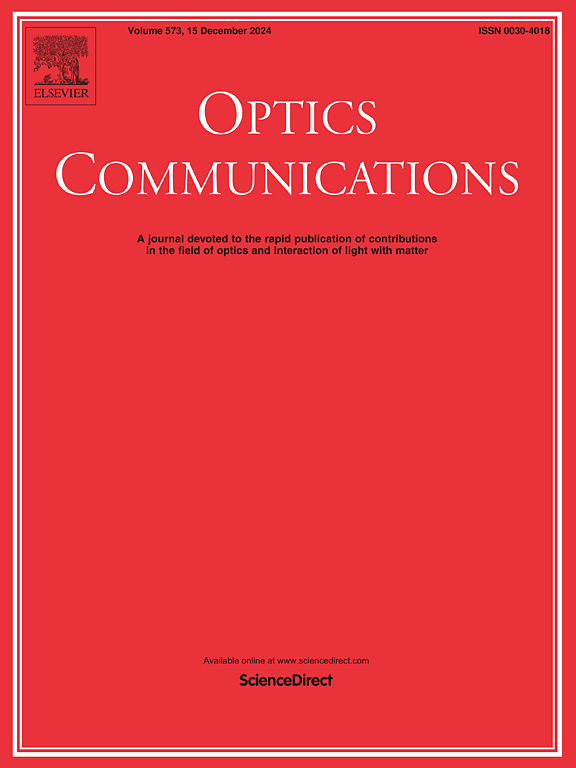Compact on-chip silicon TM polarizer with ultra-wide bandwidth covering all ITU optical communication bands up to the 2 μm mid-infrared
IF 2.2
3区 物理与天体物理
Q2 OPTICS
引用次数: 0
Abstract
On-chip silicon polarizers with broad operating bandwidth and compact footprint have recently attracted increasing attention for their applications in large capacity and high density integrated optical systems. In this paper, we present, to the best of our knowledge, the highest bandwidth TM-pass polarizer based on hybrid plasmonic waveguides engineered with subwavelength gratings. The device's bandwidth spans all ITU-defined optical communication bands. Additionally, by flexibly adjusting the device parameters, the operating bandwidth can be extended into the 2 μm mid-infrared (MIR) region. The use of a rib waveguide structure on a silicon-on-insulator wafer with a thicker silicon device layer enables significant spatial differences between the TE and TM mode field distributions. In regions where the TE mode dominates, Cr metal with high absorption loss is strategically placed, enabling low-loss transmission for the TM mode while rapidly attenuating the TE mode. To validate the design concept, we developed two device configurations with different lengths of 8 μm and 12 μm. Numerical results indicate that for the 8 μm design, the device achieves an operating bandwidth of 748 nm (1148 nm–1896 nm) with an insertion loss (IL) < 1 dB and a polarization extinction ratio (PER) > 20 dB. If the IL requirement is relaxed to 2 dB while maintaining a PER above 20 dB, the operating bandwidth extends to 1189 nm (1141 nm–2330 nm). For the 12 μm design, the device achieves an operating bandwidth of 620 nm (1148 nm–1768 nm) with IL < 1 dB and PER >20 dB. With IL < 3 dB and PER >20 dB, the operating bandwidth reaches 1209 nm (1141 nm–2350 nm). Additionally, we optimized the waveguide structure parameters to design a low-loss configuration around the 2 μm band. This work offers a new approach for creating compact, ultra-broadband on-chip polarizers with potential applications in high-capacity, high-density optical interconnects and optical communication systems.
求助全文
约1分钟内获得全文
求助全文
来源期刊

Optics Communications
物理-光学
CiteScore
5.10
自引率
8.30%
发文量
681
审稿时长
38 days
期刊介绍:
Optics Communications invites original and timely contributions containing new results in various fields of optics and photonics. The journal considers theoretical and experimental research in areas ranging from the fundamental properties of light to technological applications. Topics covered include classical and quantum optics, optical physics and light-matter interactions, lasers, imaging, guided-wave optics and optical information processing. Manuscripts should offer clear evidence of novelty and significance. Papers concentrating on mathematical and computational issues, with limited connection to optics, are not suitable for publication in the Journal. Similarly, small technical advances, or papers concerned only with engineering applications or issues of materials science fall outside the journal scope.
 求助内容:
求助内容: 应助结果提醒方式:
应助结果提醒方式:


